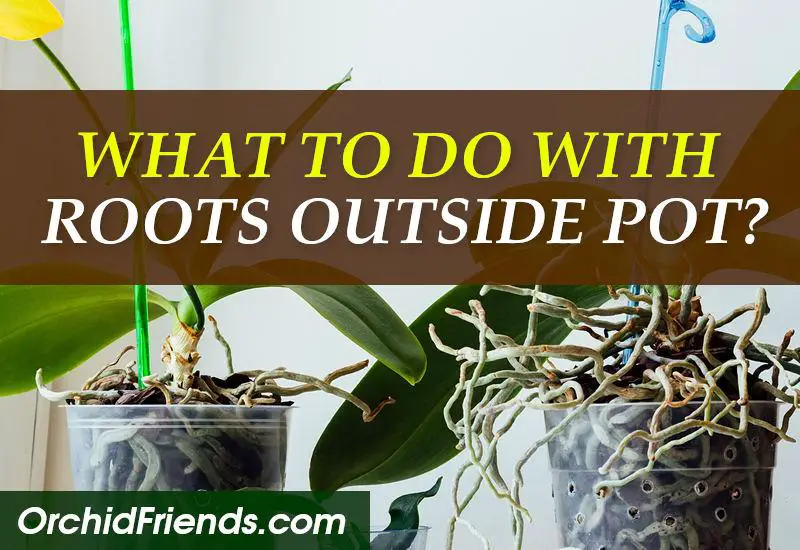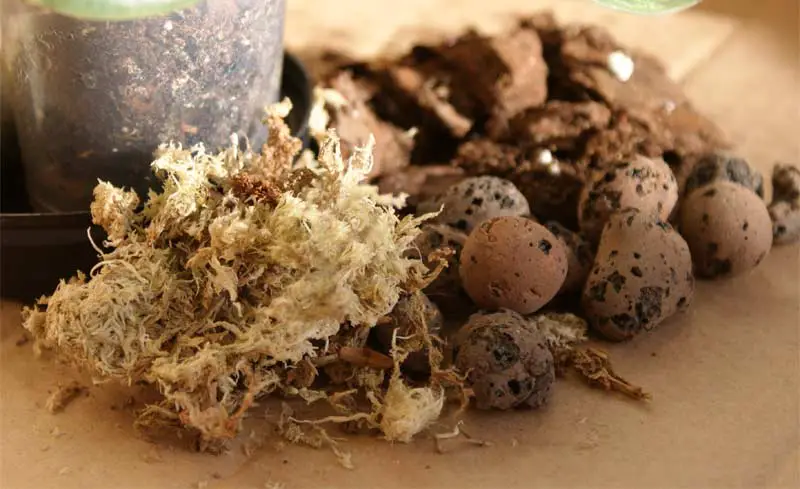
** This post is written and edited by a human being **
What to Do with Orchid Roots Outside the Pot
As a Phalaenopsis orchid owner, you might notice that over time, your orchid’s roots can start growing outside the pot. This is completely normal and happens because Phalaenopsis orchids are epiphytes, meaning they naturally grow on trees in the wild, where their roots are exposed to the air. These roots are called “aerial roots,” and they’re an important part of the plant’s growth.
Aerial roots are specialized roots that Phalaenopsis orchids use to absorb moisture and nutrients from the air, which is why they often grow outside the pot. These roots aren’t a problem as long as they’re healthy. If they’re firm and green/silvery, it’s a sign that your orchid is thriving. In fact, these aerial roots are just the orchid’s way of searching for moisture and better growing conditions. You can leave them alone, and they will continue to help your plant absorb what it needs.
However, if you notice that the roots are becoming unruly, causing your orchid to become top-heavy or unstable, you may want to consider repotting your orchid into a slightly larger pot to give the roots more space. Or, optionally, you can use a heavy decorative pot to solve this balance issue.
If any of the exposed aerial roots are dried out or shriveled, it’s best to trim them off using clean scissors or pruning shears. Keeping only healthy roots will help your Phalaenopsis orchid thrive.
In summary, aerial roots growing outside the pot are perfectly normal and can actually benefit your plant. Just make sure to monitor them, and if needed, gently reposition or trim any damaged roots to keep your orchid healthy and happy.
Identifying and Dealing With Orchid Root Problems
As an orchid enthusiast, one of the most important aspects of orchid care is maintaining healthy roots. Roots are essential for your orchid’s health because they absorb water and nutrients. Phalaenopsis orchids, in particular, rely on their roots to stay hydrated and get the nourishment they need to thrive. Sometimes, however, root problems can arise. Let me walk you through how to identify and deal with common root issues in your Phalaenopsis orchid.
Signs of Orchid Root Problems
The first step is recognizing when your orchid’s roots aren’t in their best shape. Here are some signs to look for:
- Soft, Mushy Roots: Healthy orchid roots should feel firm and plump. If they feel soft or mushy, this is a sign of root rot, often caused by overwatering or poor drainage. The roots may also appear dark or blackened.
- Shriveled or Dry Roots: Roots that are dry and shriveled can indicate underwatering or poor humidity. Phalaenopsis orchids need a consistent level of moisture in their root system, especially since they naturally grow in a humid environment.
- Yellow or Brown Roots: Discolored roots, especially those that are yellow or brown, can signal stress or damage to the root system. This could be due to insufficient watering, a too-dry environment, or even physical injury.
How to Deal with Orchid Root Problems
- Prune Damaged Roots: If you find mushy or discolored roots, you’ll need to remove them. Use clean, sharp scissors or pruning shears to trim off the affected roots. Always cut just above a healthy part of the root to avoid further damage.
- Repot the Orchid: If the root problem is significant, it’s best to repot your Phalaenopsis orchid into fresh potting mix. Choose a bark-based mix, which will provide excellent drainage and airflow to help prevent future root issues.
- Adjust Watering Habits: Overwatering or underwatering can lead to root problems, so it’s crucial to adjust your watering routine. Ensure the pot has proper drainage holes, and let the medium dry out a little between waterings. It’s usually best to water the orchid about once a week (of course, depending on the weather), but always check the moisture level of the potting medium before watering.
- Increase Humidity: Since Phalaenopsis orchids thrive in a humid environment, try increasing the humidity around your plant by placing a humidity tray or using a room humidifier. If your roots are drying out due to low humidity, this will help them stay hydrated.
- Examine the Pot: Ensure your orchid’s pot has proper drainage holes to prevent stagnant water from sitting around the roots. If the roots are growing out of the pot or the pot is too small, it may be time to move the orchid into a larger container.
Prevention is Key
Healthy roots are crucial for your Phalaenopsis orchid’s overall well-being. To prevent future root problems, make sure you’re using the right potting mix, providing adequate moisture, and avoiding over- or underwatering. Regularly inspect your orchid’s roots during repotting to catch any issues early.
By staying vigilant and acting quickly when you notice any root issues, you can help your Phalaenopsis orchid continue to thrive and produce beautiful blooms year after year.
Tip: Check out Irene’s Quick Guide to Orchid Root Health



